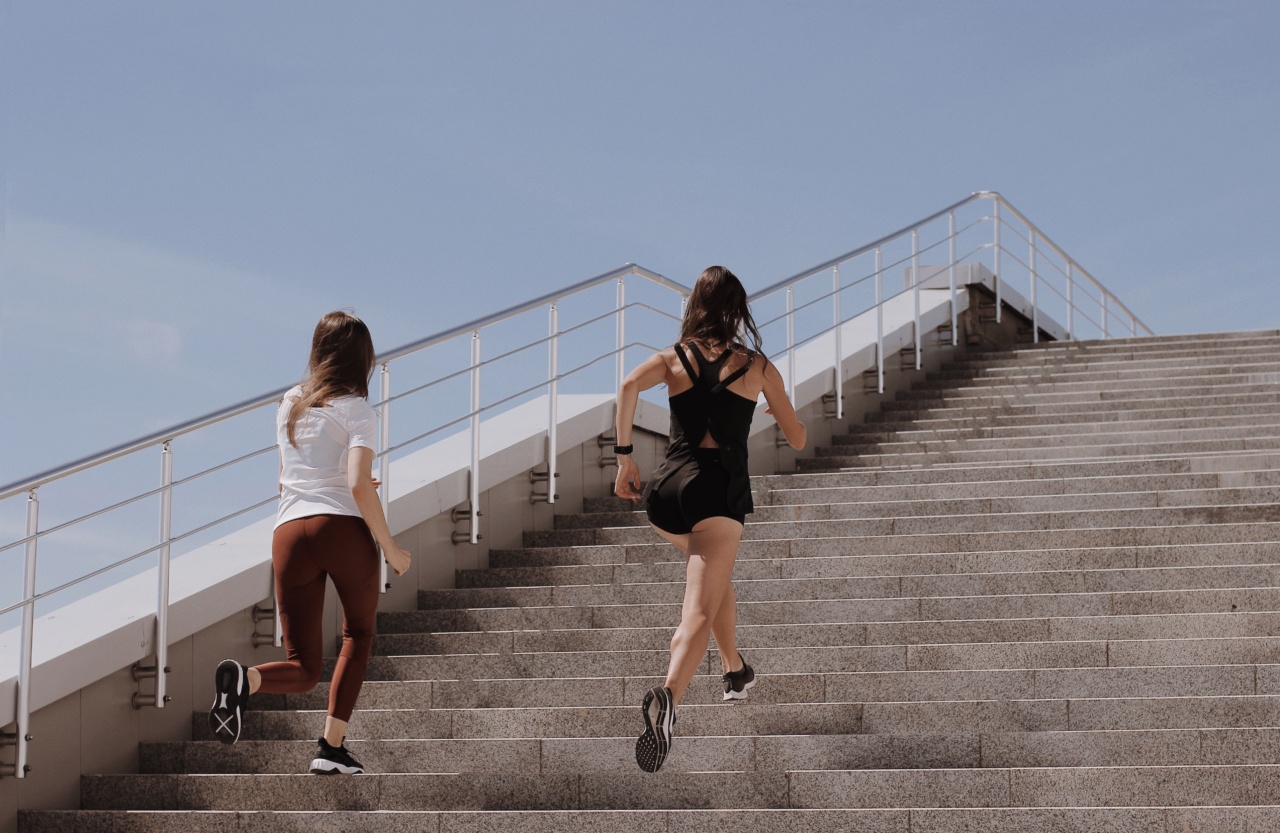Running is one of the most popular form of exercise but can be tough on your body, especially your knees. Knee pain is a common problem that many runners experience.
While knee pain can be caused by various reasons, including overuse, improper shoes, and weak muscles, runners can do certain things to reduce knee pain. Here are some steps to reduce knee pain while running:.
1. Warm up and Stretch
Before you start running, it is important to warm up your body and specifically your knees. Warming up increases the blood flow to your muscles, it helps you loosen up and prepares your body for physical activity.
A good warm-up can help to minimize the risks of injury. You can start by doing some light cardio exercises such as jogging in place, jumping jacks, or walking. Following the warm-up, you should stretch to ensure good flexibility. Stretching will help to loosen up your muscles and improve your range of motions.
It is important to focus on stretching your lower body, especially your glutes, quadriceps, hamstrings, and calves.
2. Invest in a Good Pair of Running Shoes
One of the most common causes of knee pain in runners is improper footwear. Wearing old or worn-out shoes that do not provide enough support can lead to knee pain and other injuries.
Therefore, investing in a good pair of running shoes can be an effective way to reduce knee pain. Running shoes should fit well and support the structure of your foot, as well as compensate for your running style. Look for shoes with good cushioning and shock absorption to reduce the impact of running on the knees.
3. Cross Train with Low-Impact Exercises
Running is a high-impact exercise that puts a lot of stress on your knees. To reduce knee pain, it is important to cross-train with low-impact exercises such as swimming, cycling, or yoga.
Cross-training will help to strengthen your muscles and improve your flexibility without putting excessive pressure on your knees. These exercises can also help to reduce the risk of knee injuries by providing an alternate way to maintain your cardiovascular fitness.
4. Strengthen your Leg Muscles
Strengthening your leg muscles can be an effective way to reduce knee pain. Strong leg muscles can help to support and protect your knees during running. Focus on strengthening your glutes, hamstrings, and quadriceps.
Some effective exercises include lunges, squats, leg presses and leg curls. To avoid injury, start slow and gradually increase the intensity and duration of your workout.
5. Use Proper Running Techniques
Using proper running techniques can help to reduce the stress on your knees and prevent knee pain. Maintain a good posture and ensure that your knees are aligned with your hips and feet. Avoid over-striding, which can put excessive pressure on your knees.
Instead, try to take small, quick steps and land gently on the balls of your feet rather than your heels.
6. Reduce your Running Mileage
Running long distances can increase the risk of knee pain and injury, especially if you are new to running. Therefore, it is advisable to gradually increase your running mileage and avoid overdoing it.
If you are experiencing knee pain, consider reducing your running mileage or taking rest days to allow your knees to recover.
7. Ice your Knees after Running
Icing your knees after running can help to reduce inflammation and relieve pain. You can use an ice pack or a bag of frozen vegetables wrapped in a towel. Apply ice to your knees for 20-30 minutes after each running session.
8. Try Knee Braces or Kinesiology Tape
Knee braces or kinesiology tape can also be effective in reducing knee pain. Knee braces provide support and stability to the knee joint, while kinesiology tape helps to reduce inflammation and improve muscle function.
Consult with a sports medicine specialist or physical therapist to determine which option is best for you.
9. Rest and Recover
If you are experiencing knee pain, rest and recovery are crucial. Take rest days and avoid activities that aggravate your knee pain. Allow your body to recover and heal.
You can try activities such as swimming, cycling, or walking to maintain your cardiovascular fitness without putting pressure on your knees.
10. Consult with a Doctor or Physical Therapist
If your knee pain persists or become more severe, consider consulting with a doctor or physical therapist. They can help to diagnose the underlying cause of your knee pain and create a treatment plan that is right for you.
Conclusion
Knee pain can be a serious problem for runners, but there are steps that you can take to reduce it.
Warm up and stretch, invest in good running shoes, cross-train with low-impact exercises, strengthen your leg muscles, use proper running techniques, reduce your running mileage, ice your knees after running, try knee braces or kinesiology tape, rest and recover, and consult with a doctor or physical therapist to relieve your knee pain. By taking these steps and being mindful of your body, you can continue to enjoy the benefits of running while keeping your knees healthy and pain-free.


























